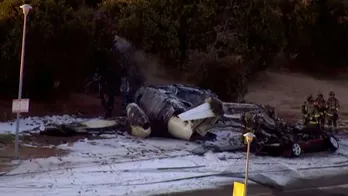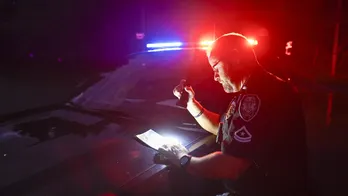Guam is still recovering from Typhoon Mawar, but residents are taking it in stride
HAGATNA, Guam — Thousands of residents on Guam still don't have water or electricity two weeks after powerful Typhoon Mawar hit the U.S. territory — the strongest storm to blow across the island in more than two decades.
With sustained winds of 140 mph, the storm churned over Guam for hours the night of Wednesday, May 24th, stripping the leaves off trees, wrecking beaches, damaging buildings and cutting the electricity and access to water for most of Guam's 170,500 residents.
In its initial assessment, the government says the island's commercial sector suffered $112 million in damage.
"Our apartment, the roof was blown off during the typhoon and all clothes and all appliances are totally ruined — and we are homeless," Perciejun Sta. Maria, 51, of Mangiloa said while standing in line at the Federal Emergency Management Agency recovery center at Guam Community College.
Sta. Maria and his family rode out Typhoon Mawar in a laundry storage room, where they're still living today without water and electricity.
Merleen Raymond, 52, is also standing in line. She says her house in Yigo was inundated with water. "Half of the roof is gone, even the sliding door falling inside. So everything is all wet."
Raymond has lived on Guam for 30 years, meaning she experienced the last big storm: Super Typhoon Pongsona in 2002, which walloped Guam with 175 mph winds, caused some $730 million in damage and killed one person.
Luckily, no one died during Typhoon Mawar and more than two weeks out, recovery is steadily on-going.
On Thursday, Guam Power Authority said it had restored 66% of its system load across the 212-square-mile island. Guam Waterworks Authority says it has restored the majority of its wells. Most of its outages are concentrated in the northern part of the island, which was hit the hardest when Typhoon Mawar suddenly swung north.
Krystal Paco-Saint Augustine, spokeswoman for Guam Governor Lou Leon Guerrero, says getting the water up and running is dependent on the restoration of electricity. "A lot of them are connected to the power, they need power restored. They're all connected."
Paco-St. Angustine says the government expects Guam to be up to 95% recovered in one month — about a third of the time it took to fully recover from Typhoon Pongsona. But many changes have been made since then, she notes — for example, structures such as buildings and telephone poles are now required to be made out of concrete.
"There weren't as many downed power lines, power poles because now they're concrete," Paco-St. Angustine said. "Also, what's really helping to support a speedy recovery and resilience effort is that we have our federal family here on-island. They were here pre-storm landfall."
Days before the storm, Governor Guerrero asked President Biden for a pre-landfall emergency declaration — which got aid moving early.
Moving around the island is a little like wading through alphabet soup, as a myriad of federal agencies launch their recovery efforts.
The local government says some 10,000 Guamanians have applied for assistance with FEMA, which is setting up recovery centers across the island. The Small Business Administration is helping business owners get loans for damaged property and lost revenue. The Department of Health and Human Services has teams in the hospitals helping relieve pressure in emergency rooms.
And there are others, such as the Army Corps of Engineers, which is assisting with debris removal, roof repair and energy restoration.
Major Andrew James, the mission commander for the temporary power team, landed on Guam last week. He says his Corps' team is working 24-hours a day and so far they've distributed over 30 generators — flown or shipped in from other parts of Guam, Hawaii and California — to priority locations such as hospitals, businesses and clinics.
This is a unique recovery deployment for Maj. James.
"We call it the tyranny of distance. So if it wasn't here before the storm, it's hard to get there," he says.
Still, despite Guam being 7,000 miles from the U.S. mainland, Maj. James says they are about where they should be to meet recovery demand. "It could always be faster but there's only so many large aircraft, so we understand that it's coming in as fast as it can."
But of the residents on Guam who NPR spoke with, none appeared openly upset about the progress of recovery.
Derwin Rolmar, an employee at Micronesian Divers Association, doesn't seem too upset that his home in Yigo still doesn't have electricity and only very low water pressure.
"From the islands we're not just humble, but negative is not going to solve anything," he said, noting that when you live on an island, you know you're going to have to wait for things — a patience that allows you to weather any storm.
Disclaimer: The copyright of this article belongs to the original author. Reposting this article is solely for the purpose of information dissemination and does not constitute any investment advice. If there is any infringement, please contact us immediately. We will make corrections or deletions as necessary. Thank you.







